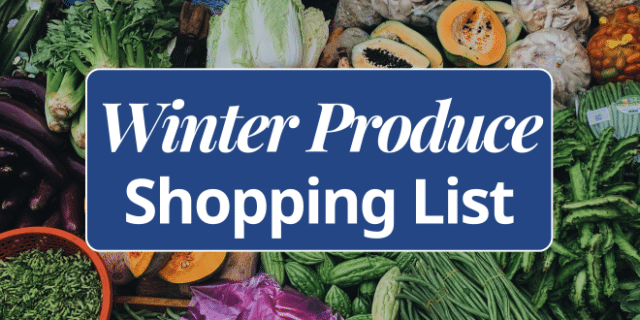By Jasmine Westbrooks, RD and Ashley Carter, RD. Edited by Josmine Evans.
Note from Stephanie Gruenke RD:
At Whole30, we recongize and honor the unique perspective, life experiences, and traditions of those in our community. And we’ve have made it our priority to provide resources that recognize and honor these traditions. Today, we’re collaborating with Jasmine Westbrooks, RD and Ashley Carter, RD, the co-founders and directors of EatWell Exchange. We also worked with guest editor Josmine Evans of Indigo Culinary Co. She elevated our understanding of the history and cultural significance of the holiday foods many of us traditionally enjoy with our families.
The history of your holiday favorites
For many of us, Thanksgiving, Christmas, and New Year’s Day deliver some of the most delicious and memorable dishes of the entire year. For some, a single dish symbolizes the entire holiday season—like grandma’s pie, dad’s gravy, or mom’s collard greens. Our personal relationships to these special holiday foods often shape our understanding of the celebrations themselves.
Let’s dive into the cultural history of some of our favorite holiday dishes and ingredients. Their origins begin in African, Native American, and other cultures.
Collard Greens
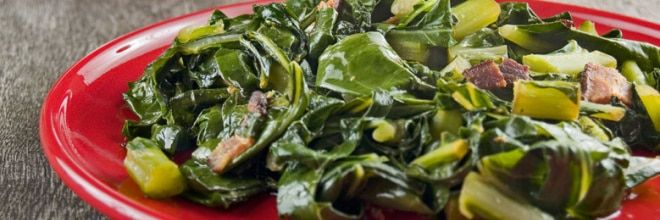
Historians are unsure of the exact origin of collard greens, although some speculate they are indigenous to the Mediteranean. In the United States, the history of collard greens traces its roots back to Africa, where leafy greens were a critical part of diet and food culture. Enslaved Africans brought collard greens to the North American continent and utilized every part of this nutrient-rich vegetable in their cooking. The brilliance of this community is reflected in their ability to make wholesome meals under the most oppressive conditions, meals that continue to nourish us today. You may see collard greens as a staple holiday food on many tables in the South on New Year’s Day, symbolizing good luck and prosperity.
If we take a deeper look into collard greens, we see that they are actually a type of kale predecessor in the cabbage family. They are one of few vegetables that offer more nutrients when cooked versus raw. Collards are packed with calcium, vitamin A and C, and because of their high fiber content, they can relieve constipation and decrease cholesterol levels.
I (Jasmine) must admit that when eating collard greens, one bowl isn’t enough, especially if you try this recipe from The New Soul Food Cookbook for People with Diabetes by Fabiola D. Gaines, RD, LD, and Roniece Weaver, MS, RD, LD. Collard greens have always been a staple in our households even beyond the holidays. Traditionally, some families add a turkey leg for additional savory flavor to smother the greens and add “Cha Cha,” (or sometimes called Chow Chow) a spicy, sweet and tangy relish on top. If you’re looking for a Whole30 compatible recipe, check out this one for Southern Style Collard Greens by Tannyr Denby Watkins.
Most local grocery stores include some varieties of either collard or mustard greens. Plus, they are low cost at less than $1 per serving.
Cranberries and Cranberry Sauce
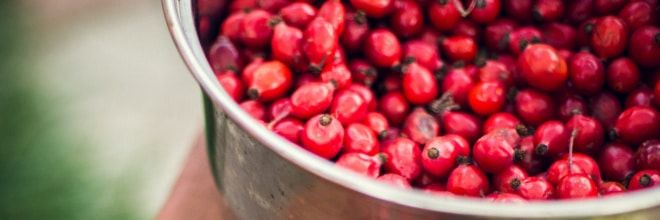
Cranberries or “bitter berries” are indigenous to North America and have long been foraged by Native Americans, who discovered many uses for the vibrant, red fruit. The Wampanoag people of southeastern Massachusetts have a rich, 12,000 year long relationship with u003ci>sasumuneashu003c/i> (wild cranberries). u003ci>Sasumuneashu003c/i> were used as a source of food and nourishment, taken as holistic medicine to fight fever, swelling, and seasickness, and used to dye clothes, blankets and rugs. To this day, the Wampanoag people gather every October in order to give thanks for the sasumuneash harvest; Cranberry Day remains the most important and meaningful holiday of the year for their tribe. rnrnThe cranberry sauce that many Americans know and love today traces its origins back to Native American recipes from the 17th century, where boldly flavored cranberry sauce was made from the simple combination of cranberries, sugar, and water.
A cup of raw cranberries provides benefits that will blow your mind: they contain more antioxidants than almost any other fruit! Cranberries are high in vitamin A, K, manganese and contain 25% of your daily requirement of vitamin C, as well high levels of phenols, which are antiviral and anti-inflammatory. Pretty impressive right?
Although cranberry sauce was the last ingredient my (Jasmine’s) grandmother put on the dinner table, it was never forgotten. The bitter taste of a fresh, raw cranberry is quite surprising to most people, but can be toned down with a splash of orange juice or adding orange peel for a garnish to create a burst of flavors that compliment each other well. Traditionally, cranberry sauce is made with white sugar to counteract the bitter taste, like this recipe from Sarah Welch. If you’re looking for a Whole30 compatible option, try this Instant Pot Whole30 Cranberry Sauce from Cheryl Malik.
You can find fresh or frozen cranberries at many grocery stores including Walmart and Aldi, often for under $3.00 a bag. Fresh cranberries are typically only seasonally available (November-December), but you can find frozen, canned, or dried throughout the rest of the year.
Turkey
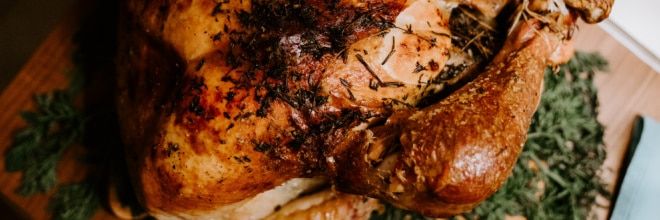
Why is turkey the traditional centerpiece of the holiday dinner table? Tradition holds that it was served by the Pilgrims of Plymouth at the celebration that’s typically regarded as “the first Thanksgiving.” However, there’s no proof to back this up. Instead, our modern association of turkey and holiday meals probably comes from the influence of presidents and significant historical figures, like Alexander Hamilton and Abraham Lincoln.
This lean protein is rich in B-vitamins which support mood and neurological function. It also provides a variety of vitamins and minerals such as magnesium, selenium, and niacin.
Growing up in my (Jasmine’s) household, roasting a great turkey was all about mastering the flavor. In my family, we always started the turkey early in the morning, before any other food preparation, and the smell of paprika would fill the house. In addition, the goal was never to have an end result of a dry turkey but moist and tender instead. This Whole30 Thanksgiving Turkey and Turkey Gravy recipe from Alex Snodgrass features fresh herbs and ghee and would make an incredible centerpiece to your holiday table.
If you’re not interested in or able to cook an entire turkey, you can purchase turkey breast meat, a smaller pre-cooked turkey or rotisserie chicken from a local store, or try a simple slow cooker turkey breast recipe like this one from Shannon Epstein, @fitslowcookerqueen.
Sweet Potato
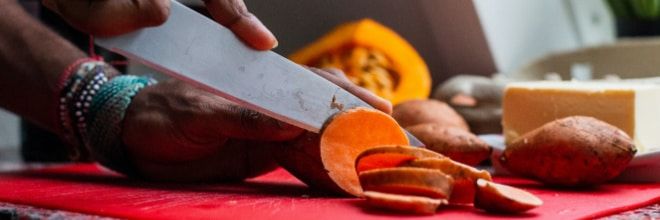
Sweet potatoes are native to South and Central America, where indigenous people have eaten and cultivated this delicious vegetable for thousands of years. Sweet potatoes eventually made their way up north, where enslaved Africans in the United States added extra sweetness to their preparation and popularized the candied yams we love today. Over time, sweet potato became a popular pie filling and joined the pumpkin pie on our holiday dinner tables.rnrnSweet potatoes are technically different from yams. The word “yam” comes from the African word nyami, referring to the starchy, edible root of the Dioscorea genus of plants. When sweet potatoes were introduced in the southern United States, enslaved Africans called them yams in remembrance of their native nyami.
Sweet potatoes are a holiday winner for many reasons. First of all, sweet potatoes are sweet! That sounds obvious, but when you want a dessert, it is rare you pick up a vegetable, yet sweet potatoes provide natural sweetness and allow you to increase your vegetable intake at the same time. Sweet potatoes are high in potassium, which can help counter the effects of sodium and high blood pressure. Balanced blood levels of potassium are critical for maintaining a strong heart electrical rhythm. They are a heart healthy side as they are high in fiber, which helps decrease cholesterol and promote satiety. They also contain 769% of the daily value of vitamin A in one cup! Vitamin A is beneficial for our vision, immune support and a great source of antioxidants.
Whether it’s sweet potato pie, candied yams or baked sweet potatoes, we cannot have the holiday season without it. One of my (Ashley’s) favorite recipes to make with my mother was sweet potato casserole. But, I will admit, my mother’s recipe would not be recommended by any dietitian (containing heavy syrup, sugar, and lots of marshmallows). Luckily we can still achieve that same great taste and flavor profile by swapping the syrup and sugar for pineapples, the butter for almond milk yogurt and cutting the marshmallows in half and adding pecans.Of course, many Whole30 compatible recipes feature sweet potatoes, as they are a staple! Try this Sweet Potato Gratin by Althea Brown or these Mashed Sweet Potatoes on the Whole30 blog.
Sweet potatoes are a versatile food and great as leftovers! When shopping on a budget it is important to find foods that can be used in a variety of ways to decrease waste. Consider using your sweet potato leftovers for breakfast, such as in a breakfast hash or as a topping for cottage pie. It’s also easy to grow your own sweet potato! Click to learn how to grow your own.
Stuffing or Dressing
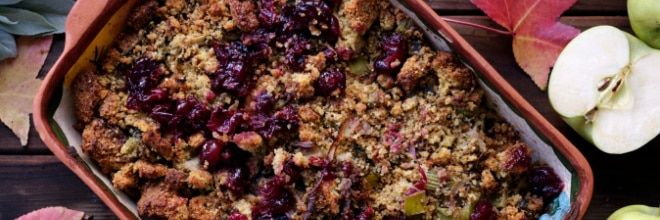
Whether it is inside of the turkey and called stuffing or served on a bowl next to it and called dressing, this delicious mix of bread, herbs, and spices is a necessary side dish for the holidays. The terms stuffing and dressing are used interchangeably and many in the southern United States call it stuffing no matter if it is in the bird or in a bowl. My family still calls it dressing. Dressing is like a snowflake, it is rare that two people will make it the same as there are so many variations and different ingredients that can be used.
Dressing is typically made with white bread or cornbread. The more colors you add to your dish with vegetables, herbs, and spices, the more nutritional value it will have. Different vegetables provide different nutrients, and we can use color to help us indicate some of the vitamins and minerals that we are receiving. Play with herbs and spices, trying out rosemary, basil, and thyme. This will add natural flavors without the additional sodium.
Growing up my (Ashley’s) family would make a traditional southern dressing with cornbread made on the stove top that was cooked and crumbled up before adding herbs, onions and celery. My mother would even add gizzards to it, which are a high protein and low-fat part of the chicken. I get that same consistency today by adding sauteed mushrooms or even eggplants to my holiday dressing.rnrnIf you’re looking for a veggie packed option, try this recipe from Beth Moncel of Budget Bytes. Anything containing bread by nature will not be Whole30 compatible. However, many recipe creatives have made grain-free versions featuring a variety of veggies, making it a much more nutrient dense option. Click to find Whole30 compatible recipes for your holiday table.
Remember, dressing does not have to be the same every year, so open your fridge and pantry and use vegetables that are going to go bad soon to prevent waste. Brussel sprouts, squash, carrots, mushrooms, and onions to name a few. If you do use a boxed version as a base, you can spice it up with some herbs, vegetables, and broth to add more nutrients, character, and flavor to your dish. You can use mushrooms, sweet potatoes or even apples to make your dressing your own! Have fun with flavors and play with herbs until you find the perfect blend. This is a fun dish that you can remix every year and continue to add a new spin to.
Try New Holiday Foods and Traditions
The holidays are truly the most wonderful time of the year where we get to enjoy family, friends, and the amazing dishes we prepare. This is also a perfect time to acknowledge and give thanks for the Native American and African culture, history, and tradition embedded in the holiday foods we enjoy. Embrace new holiday traditions and learn a new recipe or two, or try a different dish. You can make your plate colorful by adding a variety of fruits and vegetables. Choose more whole foods, limit processed foods, and keep the flavor by using fruits, herbs, and spices.
Some may not have access to their traditional food this year. And others may not be able to be around their favorite relatives who make the best dishes. But this is a time for us to tap into our family traditions and to also learn about and embrace the customs of different cultures.












